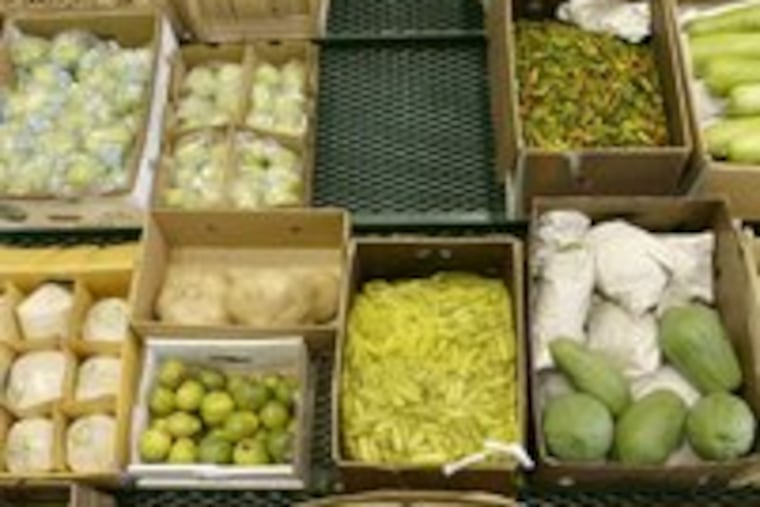Produce market’s 4th plan to expand
Three times, the produce market’s plans to expand were scuttled. Now, time truly is running out.

The Philadelphia Regional Produce Market hopes its fourth try to find growing room will prevail.
The third time certainly wasn't charmed.
In May, after two years of strong support from Gov. Rendell and State Sen. Vincent J. Fumo (D., Phila.), the governor canceled plans to move the market to the Navy Yard in the face of rising costs and protests from labor unions eager for that land to be used for port expansion.
Now, the market hopes to expand near its current location at Third Street and Packer Avenue. The latest plan involves expanding onto property at Seventh Street and Packer, much of which is expected to be vacated by Sysco Corp., the national restaurant-supply company that is just west of the current market. Sysco would erect a new building on the Pier 98 annex on Columbus Boulevard.
The market's preliminary new plan has been reviewed by Fumo, who represents that area, and the governor's staff.
But big questions remain - chiefly, can Sysco move quickly enough to give the produce market a new facility before key merchants give up on the process and move out? Losing these members could lead to the eventual breakup of the terminal that has long been valued by restaurateurs, grocers, and food-buying co-ops.
Three times, the busy market, fed by a steady stream of 18-wheelers from farms across the nation, has developed plans for a new site, only to be told by public officials to try another site.
Now, time truly is running out, said Sonny DiCrecchio, the market's general manager. The big merchants in the market are losing business because they cannot expand. Another long delay could force these members to break away from the market.
An increasing number of the market's customers are already insisting that new post-9/11 security and cold-storage standards be met. At some point, DiCrecchio said, these standards will be imposed by the federal government.
The larger members of the market would probably move to New Jersey, DiCrecchio said, because most sites that could meet their needs are there.
Losing the biggest members could lead to the breakup of the market, he added.
The bustling South Philadelphia terminal, with 35 competing merchants in one location and annual sales of more than $1.1 billion, is an important asset, say chefs, grocers, and food-buying cooperatives.
The chronic delays in building new quarters have left members of the market fuming. "If there were other options, the members would probably say 'explore them first,' but there aren't," DiCrecchio said.
As politicians have moved the project from site to site, a package of tax breaks designed to help defray the cost has expired, and construction costs have risen.
The new proposed plan is smaller than what was envisioned at the three other sites. The first feature to get cut was a wide central concourse to let customers more conveniently visit all 35 merchants. Under the latest plan, customers would have to shop around the perimeter of the market. Also, some products will have to be shuttled from cold storage at the nearby existing site.
This long saga began in 2000, when the Philadelphia Phillies baseball team was rebuffed in its effort to build a ballpark in Center City. City officials instead took 85 acres of the 50-year-old Food Distribution Center to expand the sports complex in South Philadelphia.
This cut off growth options for occupants of the distribution complex, including Sysco, which employs 500, and the produce market, where 1,100 work.
The long-overcrowded produce market was built in 1959 and leased to the merchants association by the Philadelphia Industrial Development Corp., an agency run jointly by the city and the Greater Philadelphia Chamber of Commerce.
When its need for a larger and more modern terminal became critical five years ago, city and state officials proposed a series of expansion sites - two at the old Philadelphia Naval Base, now called the Navy Yard, and the Pier 98 annex on Columbus Boulevard. Each time the market got close to building, officials moved the discussion to a different site.
One legislator who does not like the idea of moving Sysco onto Pier 98 is State Rep. William F. Keller, a Democrat who also represents the neighborhood. He said that pier should be used for business that needs close proximity to the port.
"This kind of spot development has got to stop. It doesn't work," said Keller, who is a powerful advocate for seaport growth. "We can't keep jamming stuff in and dealing with the consequences later."